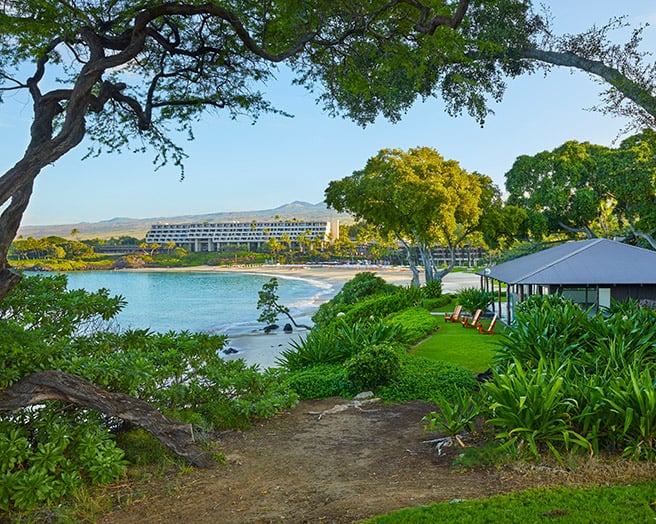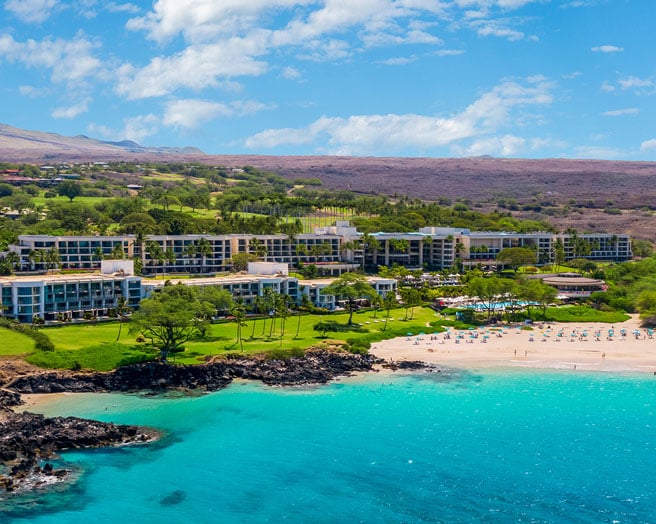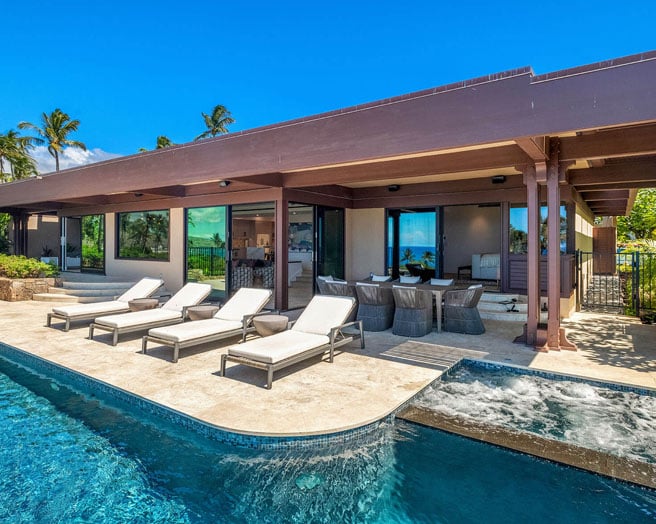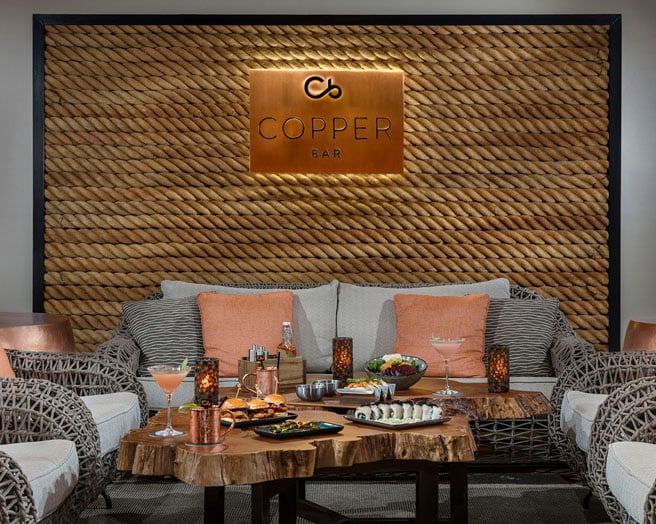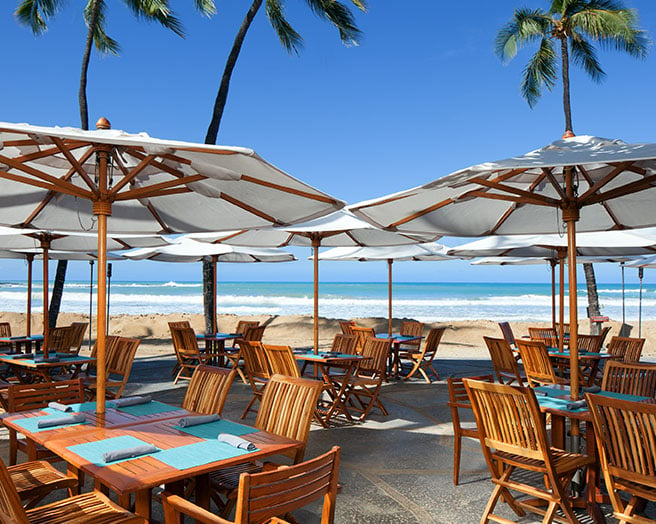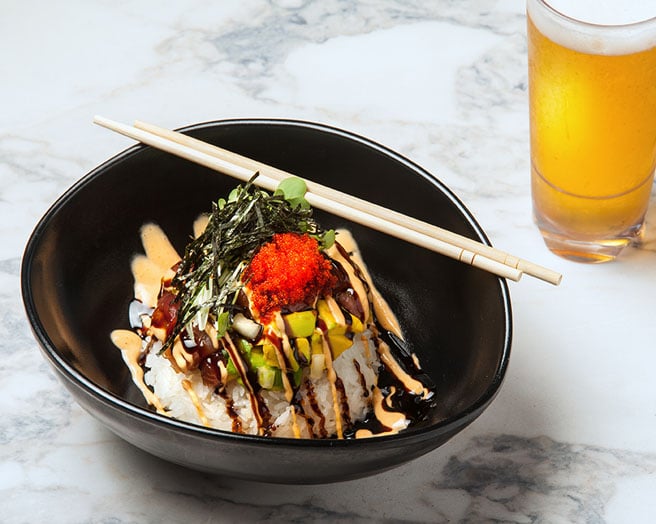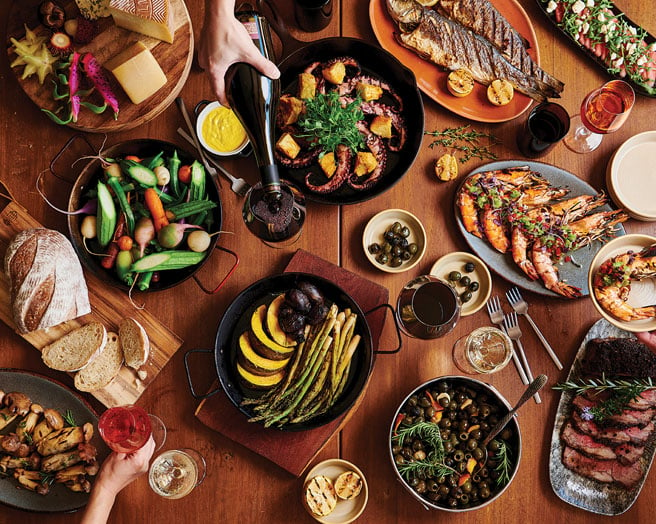The Art of Storytelling
The Art of Storytelling
Authentic hula thrives at the Merrie Monarch Festival
By Ekua Impraim
As a child growing up on America’s mainland, the word “hula” evoked visions of plastic—plastic grass skirts, plastic floral necklaces, and of course, plastic hula hoops. Eventually my awareness of the dance grew, and the kitschy images of hula from my childhood were overturned as I came to understand the beauty and complexity of true hula dancing.
Hula is more than a dance—it is a way of telling stories. While the movements of hula are aesthetically beautiful, they also have significant meaning. Prior to Western contact, Hawaiians did not have a written language, so all the history was passed orally through chants and hula dancing. An alluring way to share stories, beliefs, and historical knowledge to pass along from generation to generation.
Because of the lack of recorded history, the beginnings of hula are shrouded in mystery. Numerous legends about the creation of hula abound—and one of them suggests that it began when the Hawaiian goddess Hi‘iaka and her friend Hōpoe observed the motions of the ocean and began mimicking the movements of the waves. In another legend, the volcano goddess Pele created hula as a celebration when she found a home on the Big Island after being chased across the Pacific Ocean by her sister, the sea goddess Nāmaka. Various islands claim to be the birthplace of hula, but none of the stories about the origins of the dance have ever been confirmed.
In ancient Hawai‘i, roles were often predetermined based on the status of your family. In these times, children generally became specialists in one skill. If a child was chosen to study hula, he or she would receive extensive training from a kumu hula (hula teacher). Hula dancers played an important role as storytellers in ancient Hawaiian society; and later on, as hula dancers helped bridge the gap between pre- and post-contact Hawai‘i.
As Western missionaries arrived to the Hawaiian Islands in the 1820s, they attempted to ban hula. They felt that both the attire and dance movements of hula were lascivious. After converting to Christianity, Queen Ka‘ahumanu, a wife of King Kamehameha I, came to agree with the idea that hula was inappropriate. With her help, hula was forced underground.
Despite the ban on publicly performing hula, people continued to quietly practice the dance. It eventually reemerged from the shadows in the 1880s under the reign of King Kalākaua, a patron of the arts who believed that hula was an integral part of Hawaiian identity.
Today there are two forms of hula: hula kahiko and hula ‘auana. Hula kahiko is the traditional hula. The mele (songs) are the distinguishing factor of hula kahiko. In this type of hula, dancing is accompanied by the guttural sounds of oli (chants) combined with percussion instruments such as gourd drums and rhythm sticks.
In hula ‘auana, dancers perform to the tunes of contemporary Hawaiian music. In this style of hula, traditional moves are used, but the dances may tell more modern stories. The accompanying music has Western influences and may include slack-key guitar or ‘ukulele along with smooth vocals.
At lū‘au throughout Hawai‘i, you may find a combination of Hawaiian hula performances mixed with other dances of Polynesia. Hula is often confused with ‘ōte‘a, a dance from Tahiti that is characterized by rapid hip movements. While the two dances may have some similarities, in ‘ōte‘a, stories are told through the movements of the hips, whereas in hula, the stories are conveyed more through arm and hand movements. Hula dancing is accompanied by chanting as well as percussion instruments, while ‘ōte‘a is accompanied only by drums.
Another form of Polynesian dance that you may come across in Hawai‘i is the haka, a war dance from the Māori people of New Zealand. In this dance, participants make themselves look as fierce as possible by widening their eyes, sticking out their tongues, forcefully slapping their hands against their thighs and chests, and powerfully stomping their feet as they recite rhythmic chants. If you are a football fan, you may have seen the University of Hawai‘i Warriors perform the highly energetic, mighty haka during their pre-game ritual.
While there may be overlapping characteristics of the dances of Polynesia, it is important to understand that each culture developed distinctive styles of dance, and these dances embody the individual histories of each place. In the past, dances from around Polynesia may have been sold as authentic hula at tourist-driven lū‘au in Hawai‘i, but over the years, the productions have become better at acknowledging and identifying the variety of cultures and origin of dances that are presented at their shows, providing education as well as enjoyable entertainment.
Every spring, authentic hula thrives at the weeklong Merrie Monarch Festival in Hilo. When you hear the name of this festival, a jolly, fluttering orange and black butterfly may come to mind, but the festival actually gets its name from King Kalākaua, the Hawaiian monarch who took a stand against the missionaries’ suppression of hula and played a role in saving the dance.
At the Merrie Monarch Festival, hula hālau (dance schools) compete to win at this most prestigious hula event. Female and male hālau come from around the Hawaiian Islands, and perform both hula ‘auana and hula kahiko. There is also a solo female competition in which the winner recieves the title of “Miss Aloha Hula.”
Achieving victory at this festival is a huge honor in the hula community, and ample time goes into learning and practicing the dances. Each hālau attend to every detail of their performances, from their costumes to the way the dancers enter and exit the dance floor. Even hula schools across the mainland, as well as Japan hold classes and workshops to spread the art of hula, Hawaiian culture, and traditions.
The Merrie Monarch Festival began in 1963 and was turned into a competitive event in 1971. The added element of competition popularized the event around the Hawaiian Islands—and beyond. It also played a role in bringing about the renaissance of Hawaiian culture that occurred in the 1970s.
Beyond the individual stories that hula may share, the survival of the dance as a whole tells the story of the resilience of Hawaiian culture. Despite attempts to ban the dance and the later Disneyfication of it, authentic hula continues on as a powerful link between the present and the Native Hawaiian culture that was almost lost.
As you watch a skilled hula dancer, you sense that they are conjuring the strength of the land and history of Hawai‘i. As you see the meaning that pulsates through each of their movements, King Kalākaua’s words ring true, “Hula is the language of the heart, and therefore the heartbeat of the Hawaiian people.”
The 60th Merrie Monarch is April 9- 15, 2023 in Hilo at various venues. Visit merriemonarch.com for more information about events and to purchase tickets.
